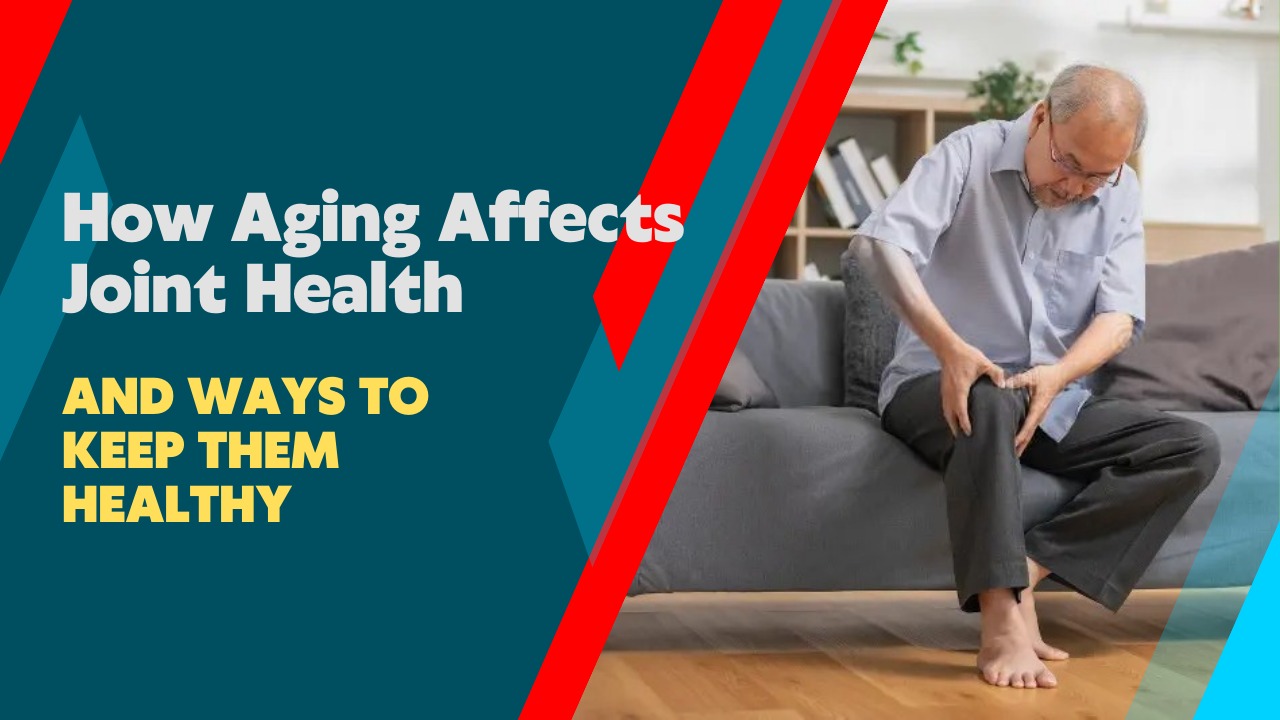Aging is a natural process that impacts every part of our body over time. One of the most noticeable changes happens in our joints. As we get older, the tissues and cartilage that help our joints move smoothly can begin to wear down, making everyday activities feel harder than before.
Joint pain, stiffness, and reduced flexibility are very common signs of aging. These problems can make it uncomfortable to walk, bend, or even sit for long periods. Many people find that they can’t move as freely as they once did, and simple tasks may take longer or feel more tiring.
Although these changes are natural, they can lower the quality of life if not managed carefully. Taking good care of your joints through regular movement, a healthy diet, and other supportive habits can make a big difference. Paying attention to joint health early can help you stay active and comfortable as you age.
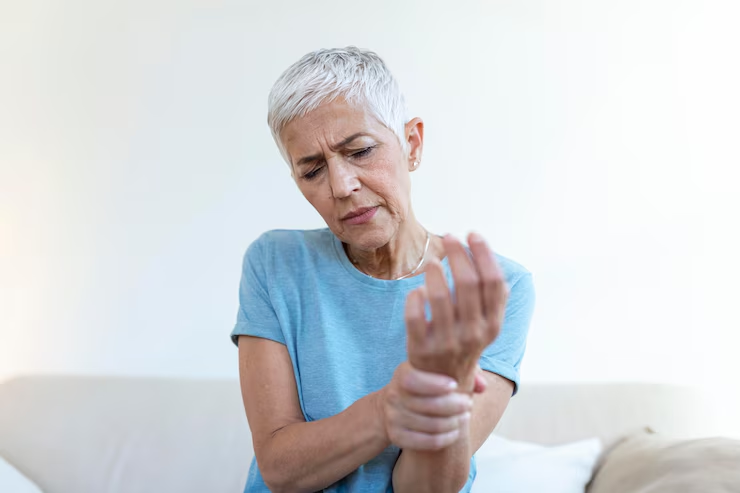
Understanding Joints and Their Function in the Body
Joints are the points where bones meet, allowing the body to move and stay flexible. The human body has over 200 joints, including large joints like the knees, hips, shoulders, and elbows, and smaller ones in the hands and feet. These joints help with bending, twisting, rotating, and supporting the body’s weight during movement and daily tasks.
Joints are made up of several key structures that facilitate smooth movement and provide shock absorption:
Cartilage: Cartilage is a smooth, rubbery tissue that covers the ends of bones in a joint. It helps bones glide over each other without rubbing or causing damage. Cartilage also acts like a cushion, absorbing shock from walking, running, or other movements.
Synovial Fluid: This is a thick, slippery fluid found inside the joint space. It helps reduce friction between bones by keeping the joint well-lubricated. Synovial fluid also nourishes the cartilage and helps the joint move easily and comfortably.
Ligaments: Ligaments are strong, flexible bands of tissue that connect one bone to another. They help keep the joint stable by holding the bones in place and preventing too much movement that could lead to injury.
Tendons: Tendons are tough cords of tissue that connect muscles to bones. When a muscle contracts, the tendon pulls on the bone, allowing the joint to move.
Bursa: A bursa is a small, fluid-filled sac found in joints. It sits between bones, tendons, or muscles and acts as a cushion to reduce pressure and friction. This helps joints move smoothly and prevents irritation or injury.
The health and functionality of these joint components are critical for maintaining mobility and minimizing pain. However, as we age, the joints go through a variety of changes that can lead to discomfort and even loss of mobility.
How Aging Affects Your Joints
As we grow older, our joints naturally begin to wear down over time. This process can start as early as our mid-30s or 40s and becomes more noticeable as the years go by. The cartilage may thin, and joint movement may become less smooth. These gradual changes can greatly affect joint health, leading to discomfort or stiffness, and can also impact our overall mobility and quality of life.
- Loss of Cartilage
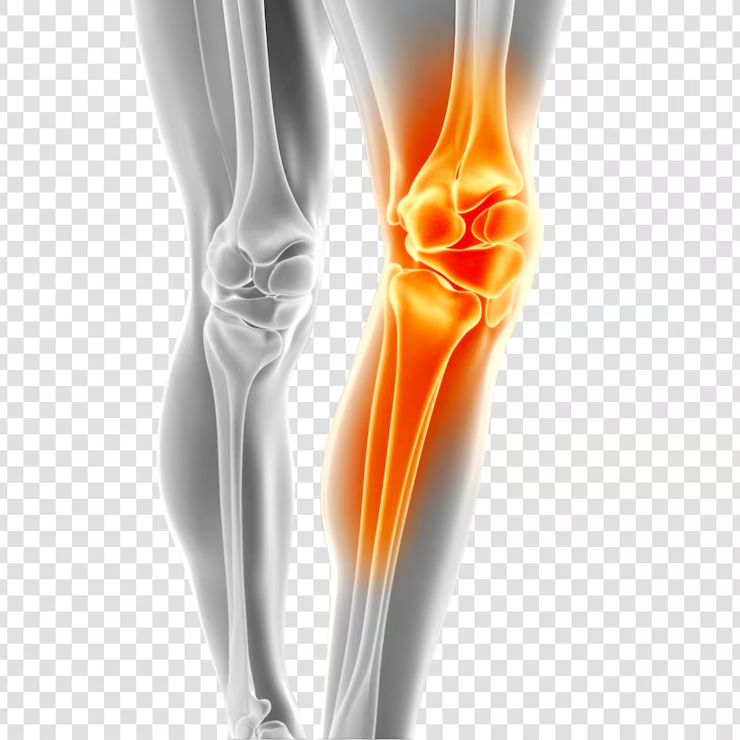
One of the most noticeable and serious changes that happen in aging joints is the slow breakdown of cartilage. Cartilage is a smooth, rubbery tissue that covers the ends of bones in a joint. It works like a cushion, helping the bones move smoothly without rubbing against each other. As we get older, this cartilage can start to wear down gradually. This can happen due to years of regular use, past injuries, or simply from the natural aging process. When the cartilage becomes thinner or damaged, the bones may begin to grind against each other. This causes pain, swelling, and stiffness in the joint, and makes it harder to move comfortably.
This condition is known as osteoarthritis (OA). It is the most common type of arthritis and affects many older adults. Osteoarthritis mostly affects joints that bear weight, such as the knees, hips, and spine, but it can also happen in the hands, fingers, or other joints. People with osteoarthritis may notice ongoing pain, stiffness after resting, swelling in the joint, and reduced flexibility. These symptoms can worsen over time, making it difficult to carry out daily tasks or enjoy physical activities. Managing osteoarthritis often involves lifestyle changes, physical therapy, or medications to reduce pain and protect the joints.
- Reduced Synovial Fluid Production
Synovial fluid is a crucial component of joint health, acting as a natural lubricant that reduces friction between bones and allows them to move smoothly. This thick, slippery fluid fills the spaces between bones, making movement easier and preventing wear and tear on the cartilage. It helps maintain joint flexibility and ensures comfortable, pain-free motion during daily activities like walking, bending, or stretching.
However, as we age, the body produces less synovial fluid, which can lead to increased friction in the joints. With less lubrication, the bones may start rubbing against each other, causing stiffness, pain, and inflammation. Over time, this can result in reduced range of motion, making it harder to move freely and perform physical tasks. The lack of synovial fluid can also speed up cartilage damage, contributing to conditions like osteoarthritis, where joint function becomes more limited.
- Weakened Muscles and Tendons
As we age, our muscles and tendons naturally weaken and lose flexibility, a condition known as sarcopenia, which typically begins around the age of 40. This decline in muscle strength means that joints receive less support and stability, leading to increased stress on the joints. Weight-bearing joints, such as the knees and hips, are especially affected, making older adults more susceptible to joint pain and injuries.
Tendons, which connect muscles to bones, also lose their elasticity with age, making them more vulnerable to damage. This can lead to conditions like tendonitis, where the tendons become inflamed due to repetitive strain or overuse. Older adults are particularly at risk for tendon injuries, especially when engaging in physical activities that put extra pressure on these connective tissues, further increasing the risk of pain and discomfort.
- Chronic Inflammation
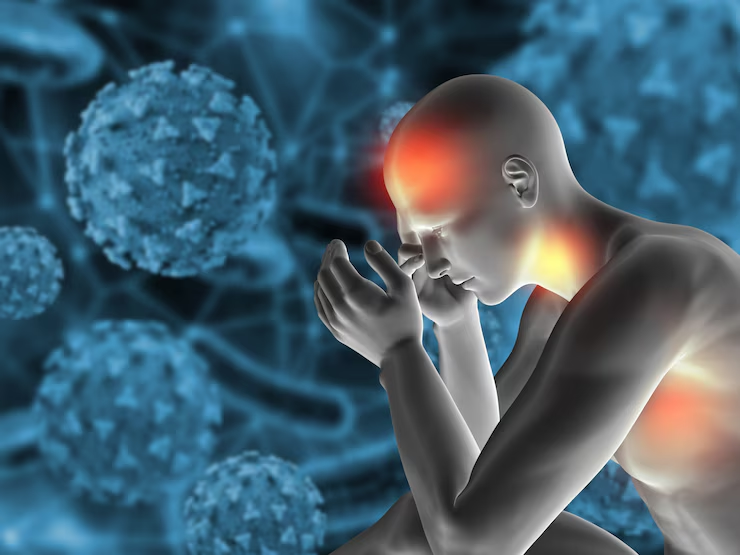
Chronic low-grade inflammation is common in older adults and can worsen joint pain. Inflammatory diseases like rheumatoid arthritis (RA) become more prevalent with age. Unlike osteoarthritis, which is caused by the breakdown of cartilage, rheumatoid arthritis is an autoimmune disorder. In RA, the body’s immune system mistakenly attacks the synovial lining of the joints, leading to inflammation, pain, and eventual joint damage.
Even without autoimmune conditions, general inflammation can still negatively impact joint health. Chronic inflammation in the body contributes to joint stiffness, swelling, and pain, making movement difficult. Over time, persistent inflammation may also accelerate the degradation of cartilage, further harming joint function. This inflammation can make it harder for older adults to stay active, leading to increased discomfort and limitations in mobility. Effective management of inflammation is key to preserving joint health and minimizing pain as we age.
- Decreased Blood Flow
As we age, blood circulation naturally decreases, which can have a significant impact on joint health. Reduced blood flow means that joints receive less oxygen and fewer nutrients, both of which are essential for maintaining healthy cartilage and supporting repair processes. Without adequate circulation, joints are less able to recover from injury or inflammation, leading to slower healing and increased discomfort.
In addition to slowing healing, poor circulation can also contribute to joint stiffness and pain. The lack of proper blood flow can cause the cartilage to degenerate over time, worsening symptoms of joint problems like osteoarthritis. This can lead to increased inflammation, discomfort, and limited mobility. As a result, maintaining healthy circulation is crucial for keeping joints functioning well and minimizing the effects of aging on joint health.
- Bone Density Decline
As we age, bone density naturally decreases, making bones weaker and more prone to conditions like osteoporosis. With reduced bone density, the bones become more fragile and are at a higher risk of fractures. This decline in bone strength can significantly affect the overall stability and function of the joints, making them more vulnerable to damage.
Osteoporotic bones can also lead to changes in the alignment and mechanics of the joints. These structural changes often contribute to increased pain, stiffness, and dysfunction in the affected areas. As the bones lose density and become less able to support the joints properly, the risk of joint-related issues rises, leading to reduced mobility and a higher likelihood of injuries. Preventing or managing bone density loss is essential for maintaining joint health and minimizing the discomfort and limitations that come with aging.
Common Joint Problems Associated with Aging
As we age, the likelihood of developing joint problems increases. Several conditions become more prevalent, affecting older adults’ mobility and comfort. Some of the most common joint issues include:
Osteoarthritis (OA)
Osteoarthritis (OA) is the most common type of arthritis in older adults, caused by the gradual breakdown of cartilage. It usually affects weight-bearing joints like the knees, hips, spine, and hands. As the cartilage wears away, the bones can begin to rub together, causing pain, stiffness, swelling, and a reduced range of motion. OA can also result in joint deformities, making it more difficult to perform everyday activities. In severe cases, the joint damage may become significant enough to require surgical treatment, such as joint replacement. Managing symptoms with medication, physical therapy, and lifestyle changes is important to slow the progression of OA and improve the quality of life for those affected by the condition.
Rheumatoid Arthritis (RA)
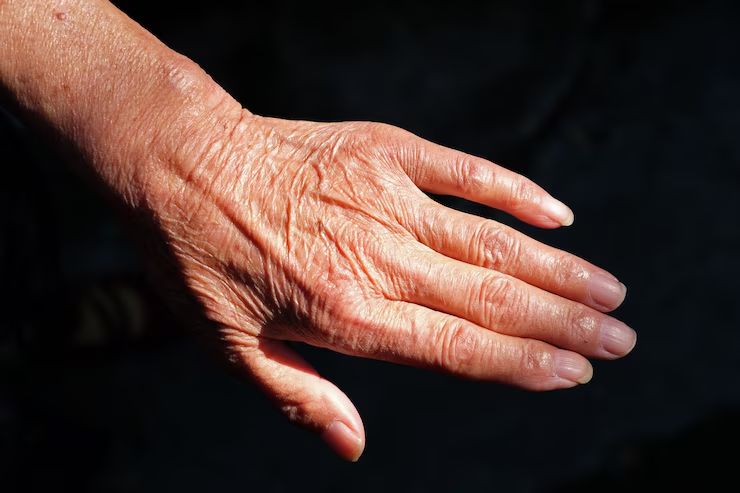
Rheumatoid arthritis (RA) is an autoimmune disease that leads to joint inflammation. It typically affects smaller joints in the hands and feet but can also impact larger joints. RA causes symptoms such as joint pain, swelling, warmth, and stiffness, particularly in the morning. Unlike osteoarthritis, which usually affects one side of the body, RA can impact both sides symmetrically. In addition to joint symptoms, RA can cause systemic issues like fatigue and fever. The inflammation caused by RA can damage the joints over time, leading to deformities and decreased mobility. Early diagnosis and treatment are essential to managing RA and preventing long-term damage, helping improve the quality of life for those affected.
Bursitis
Bursitis occurs when the bursae, small fluid-filled sacs that cushion the joints, become inflamed. This condition most commonly affects joints like the shoulders, elbows, and hips. Repetitive movements or prolonged pressure on a joint are the primary causes of bursitis. Over time, these factors can irritate the bursae, leading to inflammation. The symptoms of bursitis include pain, swelling, and a reduced range of motion, making it difficult to perform everyday activities. The pain is often worsened by movement or pressure on the affected joint. Rest, ice, and anti-inflammatory treatments are commonly used to manage the symptoms, and in more severe cases, medical interventions such as physical therapy or injections may be required.
Gout
Gout is a type of arthritis that occurs when uric acid crystals build up in the joints, causing intense pain, swelling, and redness. The condition most often affects the big toe but can also impact other joints, including the knees, wrists, and elbows. Gout is more common in older adults, especially those with high levels of uric acid in their blood or a family history of the condition. This buildup of uric acid typically happens when the body either produces too much uric acid or is unable to eliminate it efficiently. Gout attacks can be triggered by factors such as alcohol consumption, certain foods, dehydration, or medications. Managing gout often involves medication, dietary changes, and lifestyle adjustments to reduce uric acid levels and prevent future flare-ups.
Tendonitis
Tendonitis is the inflammation of a tendon, which connects muscles to bones, often caused by overuse or injury. As we age, tendons naturally weaken and lose elasticity, making older adults more prone to developing tendonitis. This condition typically affects joints like the shoulders, elbows, and knees, causing pain, swelling, and limited movement. Repetitive motions or sudden, intense physical activities can trigger or worsen tendonitis, leading to discomfort and restricted mobility. Treatment for tendonitis usually involves rest, ice, and anti-inflammatory medications to reduce swelling and pain. In more severe cases, physical therapy or other interventions may be needed to restore function and alleviate discomfort. Managing tendonitis early can prevent further damage and improve overall joint health.
What You Can Do to Protect Your Joints
While aging brings inevitable changes to the joints, there are several steps you can take to protect and maintain their health. With proper care, you can reduce pain, improve mobility, and lead an active life well into your senior years.
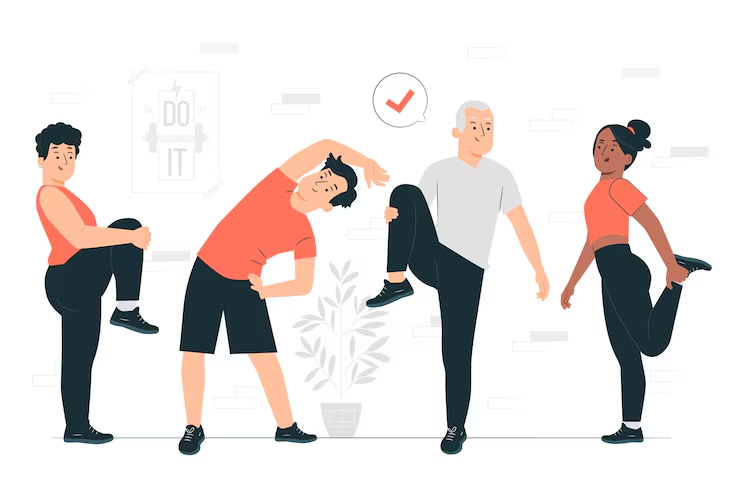
- Stay Active and Exercise Regularly
Staying active is one of the best ways to protect your joints as you age. Regular exercise strengthens the muscles around your joints, offering better support and reducing injury risk. It also improves joint flexibility and reduces stiffness. However, it’s crucial to choose exercises that minimize stress on the joints, such as low-impact activities like swimming, cycling, and walking, to keep your joints healthy and functioning well.
Low-impact exercises, such as swimming, cycling, and walking, are highly beneficial for joint health. These activities allow you to elevate your heart rate and improve cardiovascular fitness while minimizing the strain on your joints. They are ideal for reducing joint pain and improving overall mobility, making them excellent choices for those with joint concerns.
Strength training is another essential aspect of joint care. Building muscle mass around your joints provides additional support, reducing the risk of injury. Focusing on exercises that target the muscles surrounding key joints, like the knees, hips, and spine, can help stabilize them and protect against wear and tear. This kind of strength training helps improve posture, balance, and mobility.
Stretching and flexibility exercises, such as yoga or Pilates, are also vital in maintaining joint health. These exercises enhance flexibility, improve joint mobility, and reduce stiffness. Regular stretching helps keep the muscles and tendons around the joints flexible, which can prevent tightness and reduce the risk of injuries caused by restricted movement. Incorporating these exercises into your routine can help maintain joint health and prevent discomfort.
- Maintain a Healthy Weight
Carrying excess weight increases the pressure on weight-bearing joints, especially the knees, hips, and spine. Maintaining a healthy weight is crucial for protecting your joints and preventing pain. Even losing a small amount of weight can greatly reduce the strain on your joints, alleviating discomfort. By managing your weight, you not only ease the pressure on your joints but also lower the risk of developing conditions like osteoarthritis, helping to keep your joints healthy as you age.
- Eat a Joint-Healthy Diet
Proper nutrition is key for joint health. A balanced, anti-inflammatory diet supports joint function, reduces inflammation, and helps maintain overall joint health, contributing to better mobility and less discomfort over time. Key nutrients for joint health include:
Omega-3 fatty acids, found in fatty fish like salmon, flaxseed, and walnuts, are known for their powerful anti-inflammatory properties. These healthy fats can help reduce joint pain, swelling, and stiffness by lowering inflammation in the body, providing relief to those suffering from joint issues.
Vitamin D plays a crucial role in calcium absorption, which is essential for bone health. Adequate levels of vitamin D help maintain strong bones and joints. Sunlight is a natural source of vitamin D, but it can also be obtained through fortified foods like milk and cereals or supplements if needed.
Calcium is vital for maintaining bone density and strength. It helps prevent bones from becoming brittle and weak, reducing the risk of fractures. Good sources of calcium include dairy products like milk and cheese, leafy green vegetables like spinach, and fortified plant-based milk options.
Antioxidants, found in fruits and vegetables, are important for reducing inflammation and oxidative stress in the body. Foods rich in vitamin C, like citrus fruits, and vitamin E, found in nuts and seeds, can help protect the joints from damage and support overall joint health by fighting inflammation.
- Stay Hydrated
Staying properly hydrated is essential for maintaining healthy joints, as water plays a key role in preserving the viscosity of synovial fluid. Synovial fluid is responsible for lubricating the joints, allowing them to move smoothly and without friction. Without adequate hydration, the synovial fluid can become thicker and less effective, leading to joint stiffness and discomfort. Drinking enough water throughout the day helps keep the joints well-lubricated, reducing the risk of joint pain and inflammation. Proper hydration also supports the body’s natural ability to repair and maintain joint tissues. To support joint health, aim to drink plenty of water throughout the day, especially if you’re engaging in physical activity or spending time in hot environments that can lead to dehydration.
- Use Joint Supplements
Several supplements may be beneficial in supporting joint health and managing symptoms of arthritis and other joint problems. Here are some common options:
Glucosamine and Chondroitin: These two compounds are often taken together to support cartilage health. Glucosamine helps in building and maintaining cartilage, while chondroitin helps in preventing cartilage breakdown. Together, they are believed to reduce pain and improve joint function, particularly in individuals with osteoarthritis.
Turmeric (Curcumin): The active compound in turmeric, curcumin, has well-known anti-inflammatory properties that can help reduce joint pain and swelling. Regular use of turmeric may provide relief from inflammation, especially in those dealing with conditions like osteoarthritis and rheumatoid arthritis.
Fish Oil: Rich in omega-3 fatty acids, fish oil helps reduce inflammation in the body, including in the joints. Omega-3s are known to alleviate joint stiffness, improve mobility, and reduce pain, especially in individuals suffering from rheumatoid arthritis or other inflammatory joint conditions.
- Avoid Repetitive Movements
Repetitive motions, like lifting, twisting, or overusing certain joints, can worsen joint pain and increase the risk of injury over time. It’s important to be mindful of your posture during daily tasks and take regular breaks from repetitive movements to prevent strain on the joints. Whether at work or in leisure activities, frequent joint movement can cause discomfort if not managed properly. Consider using ergonomic tools or devices designed to reduce stress on the affected joints. For instance, proper lifting techniques, adjustable workstations, and support devices can significantly reduce the strain on joints, improving comfort and reducing the likelihood of injury. Prioritizing joint health in this way can help maintain mobility and prevent long-term damage.
- Consider Joint Protection Devices
If you experience joint pain, using joint braces, supports, or orthotic devices can be beneficial in stabilizing and protecting the affected joints. These devices help provide extra support during physical activities, reducing strain and minimizing the risk of further damage. Whether it’s a knee brace, elbow support, or custom orthotic insoles, these tools can alleviate discomfort and enhance joint stability, allowing for more comfortable movement. By using such devices, you can protect the joints, prevent worsening symptoms, and maintain better mobility throughout daily activities.
- Seek Professional Help When Needed
If joint pain continues or worsens, it’s important to consult a healthcare provider. Addressing joint issues early can prevent further damage and long-term complications. A doctor may suggest treatments such as physical therapy, which can improve movement and strength, or medications to manage pain and reduce inflammation. In some cases, injections may be recommended to target specific areas of pain or inflammation. Seeking professional care ensures you get the appropriate treatment, helping manage symptoms effectively and maintain joint function for a better quality of life.

Conclusion
Aging naturally impacts the joints, but with the right approach, it’s possible to manage these changes and maintain an active, healthy lifestyle. Staying active, following a joint-friendly diet, and taking preventative measures can help reduce the effects of aging on your joints, allowing you to stay mobile and pain-free for longer. Regular exercise, a balanced diet rich in anti-inflammatory nutrients, and proper hydration all play vital roles in supporting joint health.
If joint pain or stiffness becomes persistent, don’t hesitate to seek medical advice to prevent further damage. Early intervention can make a significant difference in managing symptoms and preserving joint function. With the right care and attention, you can age gracefully, keep your joints in good health, and continue to enjoy an active life with fewer limitations.
FAQs
- What are the main causes of joint pain as we age ?
As we age, joint pain is often caused by the gradual breakdown of cartilage (leading to osteoarthritis), reduced synovial fluid (causing friction), weakened muscles and tendons (putting more stress on joints), and chronic inflammation (common in conditions like rheumatoid arthritis). - How can exercise help my joints as I get older ?
Exercise strengthens muscles around joints, which provides support and reduces strain. It also improves flexibility, reduces inflammation, and helps maintain a healthy weight, which all reduce joint pain and stiffness. - What are some dietary changes I can make to improve joint health ?
To support joint health, eat omega-3 fatty acids (found in fish and walnuts), vitamin D and calcium (for bone strength), and antioxidants (from fruits and vegetables) to reduce inflammation and promote cartilage health. - When should I see a doctor about my joint pain ?
You should see a doctor if joint pain becomes persistent, severe, or limits daily activities, or if you experience swelling, warmth, or stiffness that doesn’t improve with rest or over-the-counter medication. - Can joint supplements really help with joint pain ?
Joint supplements like glucosamine, chondroitin, and omega-3 fatty acids may help reduce pain and inflammation, but they work best alongside a healthy lifestyle. Always consult a doctor before starting supplements.

